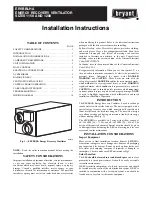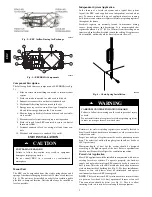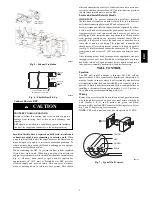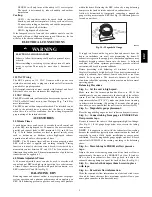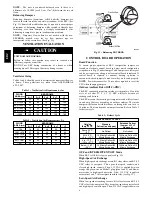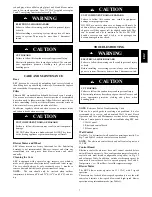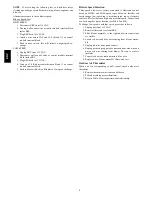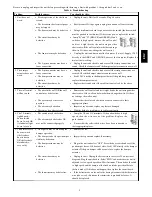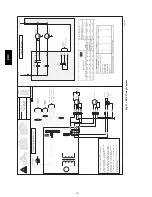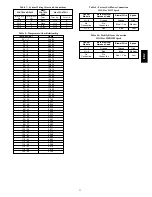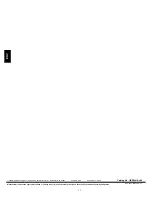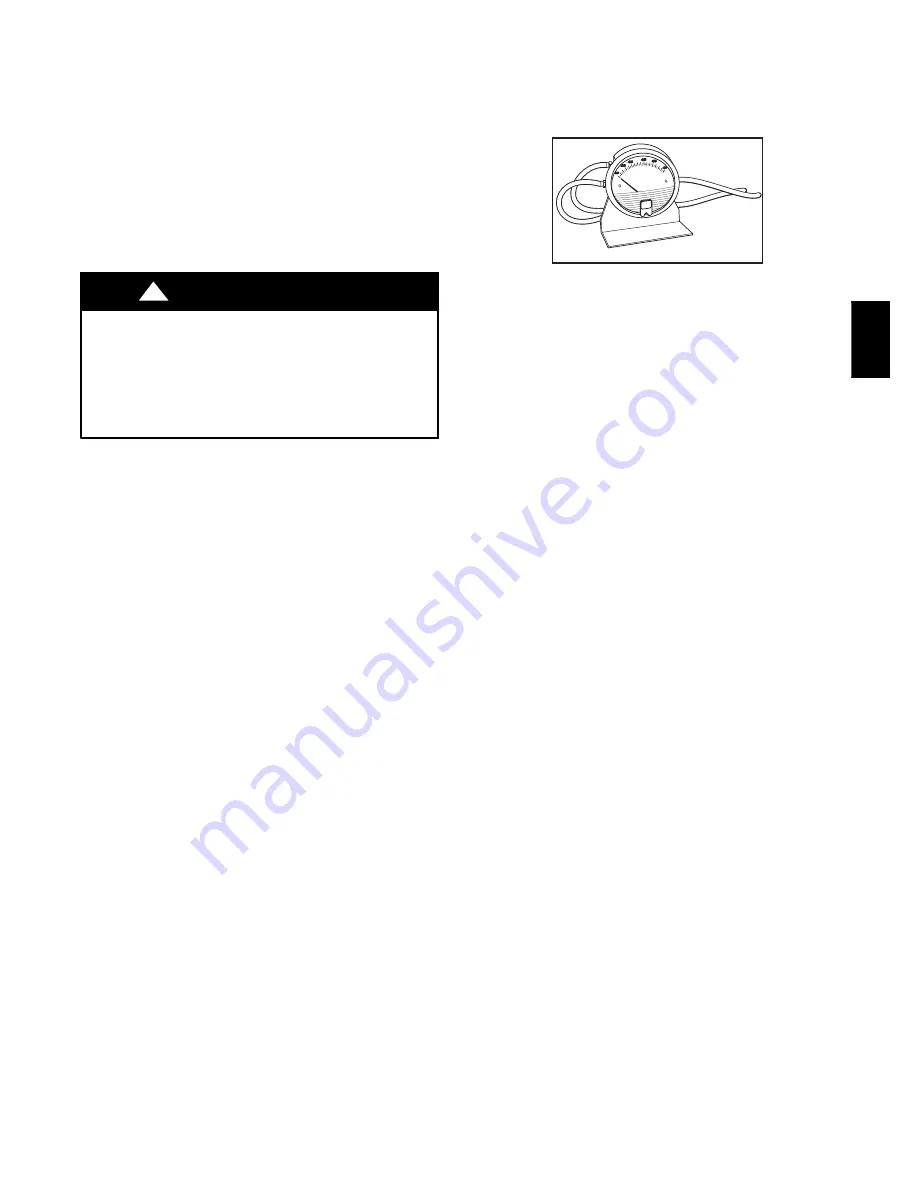
5
DEHUM -- will only turn on if humidity is 3% over setpoint.
The speed is determined by indoor humidity and outdoor
temperature.
Cooling:
AUTO -- the ventilator selects the speed based on indoor
humidity and outdoor temperature. It may cycle on/off every
30 minutes depending on humidity and outside temperature.
LOW -- low speed all of the time.
HIGH -- high speed all of the time.
If the fan speed is set to Auto and the ventilator wants to run, the
fan speed will run at High continuous speed. Otherwise, the fan
will stay at the chosen continuous fan speed.
ELECTRICAL CONNECTIONS
ELECTRICAL SHOCK HAZARD
Failure to follow this warning could result in personal injury
or death.
Before installing or servicing system, always turn off main
power to system. There may be more than 1 disconnect
switch.
!
WARNING
115 VAC Wiring
The ERV operates on 115 VAC. It comes with a power cord
attached to unit and ready to plug into a fused outlet. Unit must be
grounded for proper operation.
All electrical connections must comply with National and Local
Electrical Codes, or other ordinances that might apply.
12 VDC Wiring
The ERV circuit board, wall control, and accessories operate on 12
VDC. See Wall Control section, item Wiring and Fig. 7 and 8 for
more information.
The ERV comes with an integrated interlock. The interlock can be
wired to the system blower to ensure that the blower is running
when there is a call for ventilation. See the wiring diagram for
proper wiring of the interlock circuit.
ACCESSORIES
20 Minute Timer
A push button timer can be used to override the wall control and
put the ERV into high speed for 20 minutes. Connect switches in
parallel and connect leads to ERV terminals I, OC, and OL (see
Fig. 9). Push button locations are ideal in special activity areas,
such as bathrooms or kitchens, where high--speed exhaust
operation is needed for a short period of time.
NOTE
: The 20 minute timer will not function properly unless
ERV wall control is applied and working correctly. Timing
function is internal to electronic circuit board, it is activated by a
momentary contact between OC and OL. The I connection is to
illuminate the push button. The maximum number of push button
timers that can be applied is 5.
60 Minute Adjustable Timer
A 60 minute adjustable timer can also be used to override wall
control and put ERV into high--speed operation for a select amount
of time. Connect timer in parallel with push button timers, or to
ERV terminals OC and OL (see Fig. 9).
BALANCING ERV
Balancing intake and exhaust airflow is very important for proper
system operation and optimum performance when applying an
ERV. Unit balancing prevents a positive and/or negative pressure
within the home. Balancing the ERV is done by using balancing
dampers in the fresh air intake and stale air exhaust ducts.
Airflow is determined by temporarily connecting a magnehelic
gauge to the pressure taps on ERV. (See Fig. 10.) Balancing chart is
located on unit door.
A98400
Fig. 10 -- Magnehelic Gauge
If supply--air from outside is greater than exhaust--air from the
house, an imbalance can result over pressurizing the home. If
exhaust--air is greater than supply--air, combustion appliances may
backdraft, bringing exhaust fumes into the house. A balanced
condition will ensure optimum performance, provide satisfied
customers, and avoid expensive callbacks.
Before proceeding with balancing, all windows, doors, and
fireplace flues should be tightly closed. No exhaust systems such as
range top exhausts, dryer exhaust, fume hoods, bath or roof fans
should be in operation. The forced--air furnace (if used for
circulation) should be operating in continuous fan mode for normal
operating speed.
Balancing Procedure
Step 1 — Set the unit to high speed.
Make sure that the furnace/air handler blower is ON if the
installation is in any way connected to the ductwork of the cold air
return. If not, leave furnace/air handler blower OFF. If the outside
temperature is below 32
_
F (0
_
C), make sure the unit is not running
in defrost while balancing. (By waiting 10 minutes after plugging
the unit in, you are assured that the unit is not in a defrost cycle.)
Step 2 — Magnehelic gauge placement.
Place the magnehelic gauge on a level surface and adjust it to zero.
Step 3 — Connect tubing from gauge to EXHAUST air
flow pressure taps.
Be sure to connect the tubes to their appropriate high/low fittings.
(See Fig. 11.) If the gauge drops below zero, reverse the tubing
connections.
NOTE
: It is suggested to start with the exhaust air flow reading
because the exhaust has typically more restriction than the fresh air,
especially in cases of fully ducted installations or source point
ventilation. Place the magnehelic gauge upright and level. Record
equivalent AIR FLOW of the reading according to the balancing
chart.
Step 4 — Move tubing to FRESH air flow pressure
taps.
Adjust the fresh air balancing damper until the fresh air flow is
approximately the same as the EXHAUST air flow. If fresh air
flow is less than exhaust air flow, then go back and adjust the
exhaust balancing damper to equal the fresh air flow. (See Fig. 11.)
Step 5 — Secure both dampers thumb screw in place
with tape.
Step 6 — Record air flow information.
Write the required air flow information on a label and stick it near
the unit for future reference (date, maximum speed air flows, your
name, phone number and business address).
ER
V

